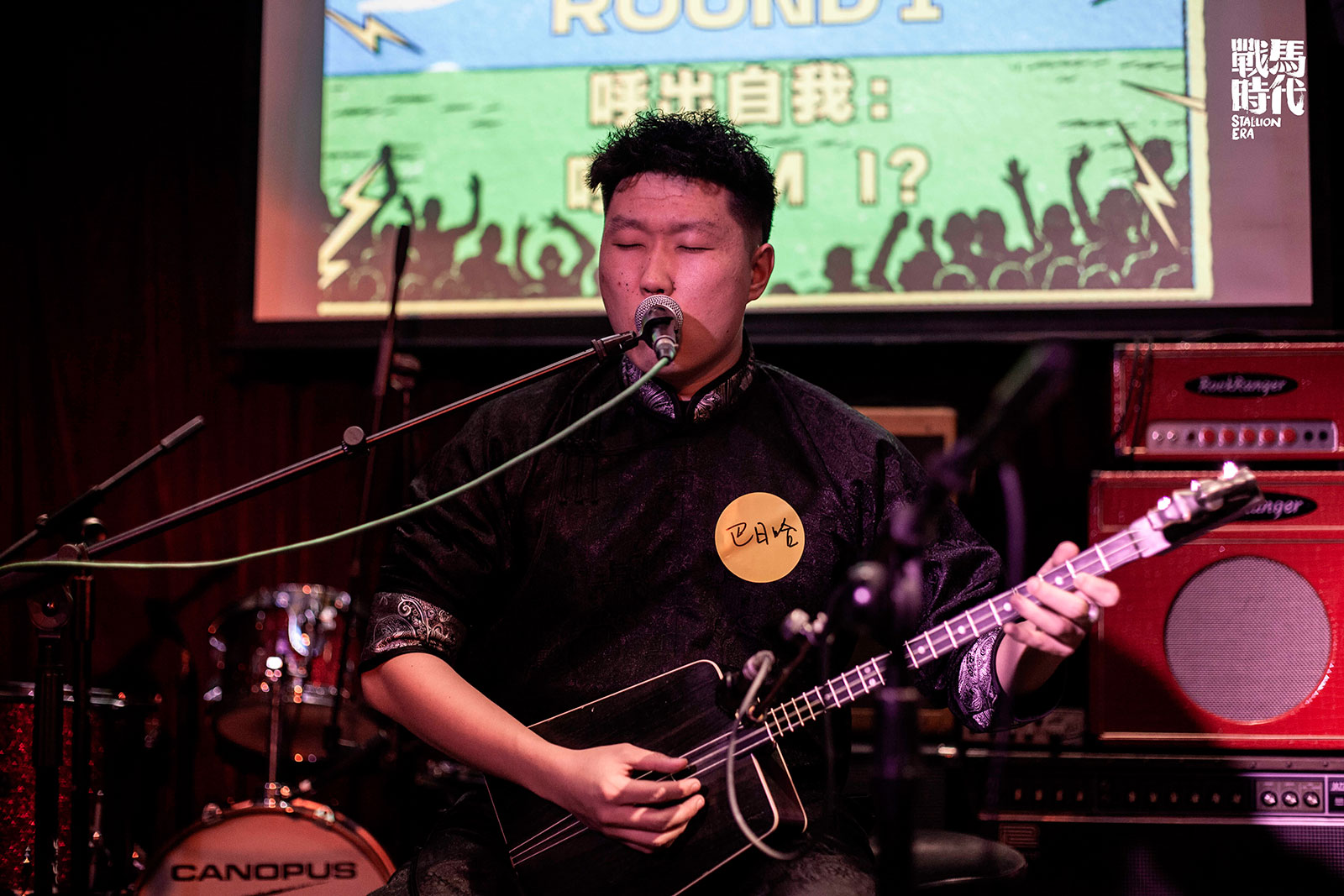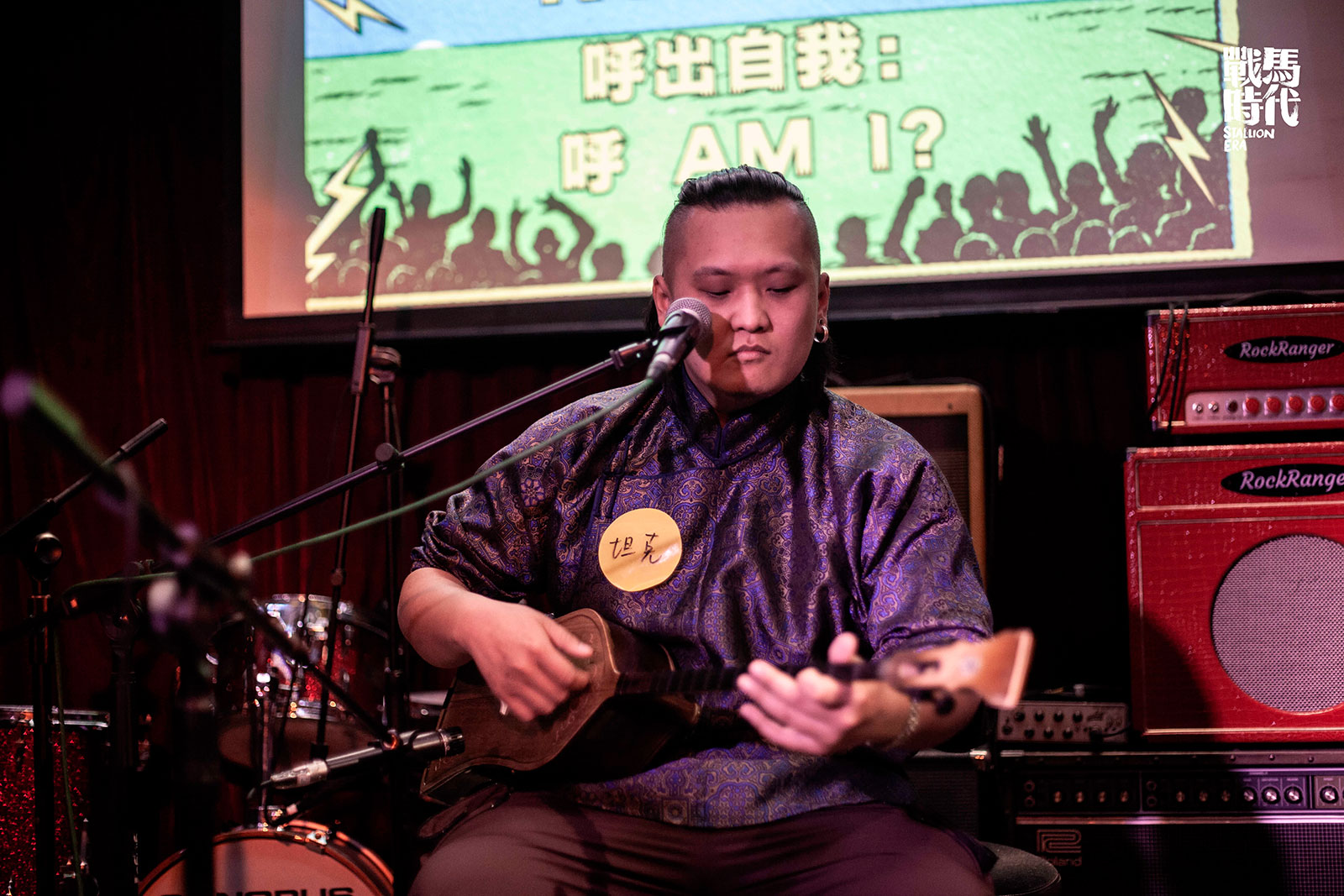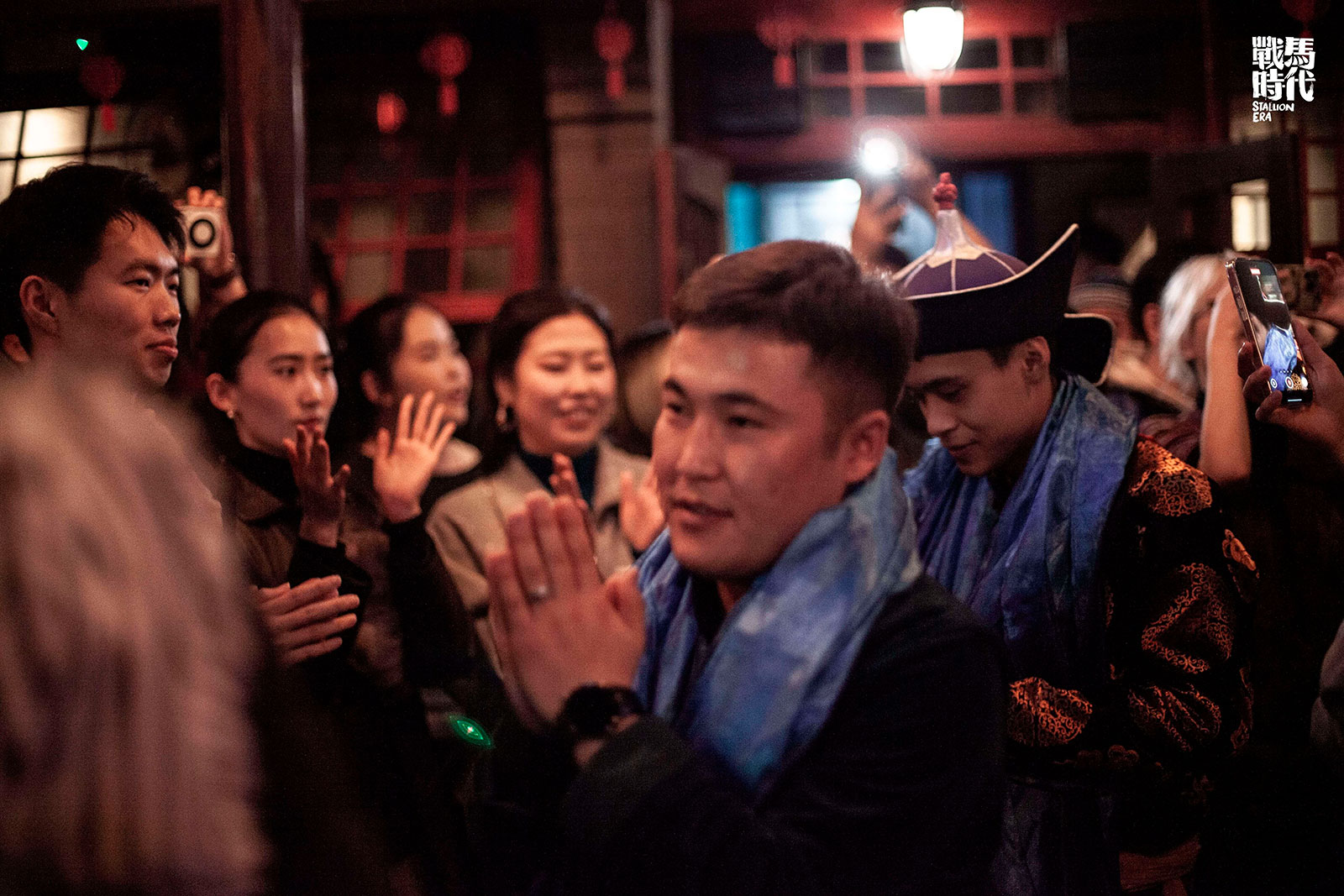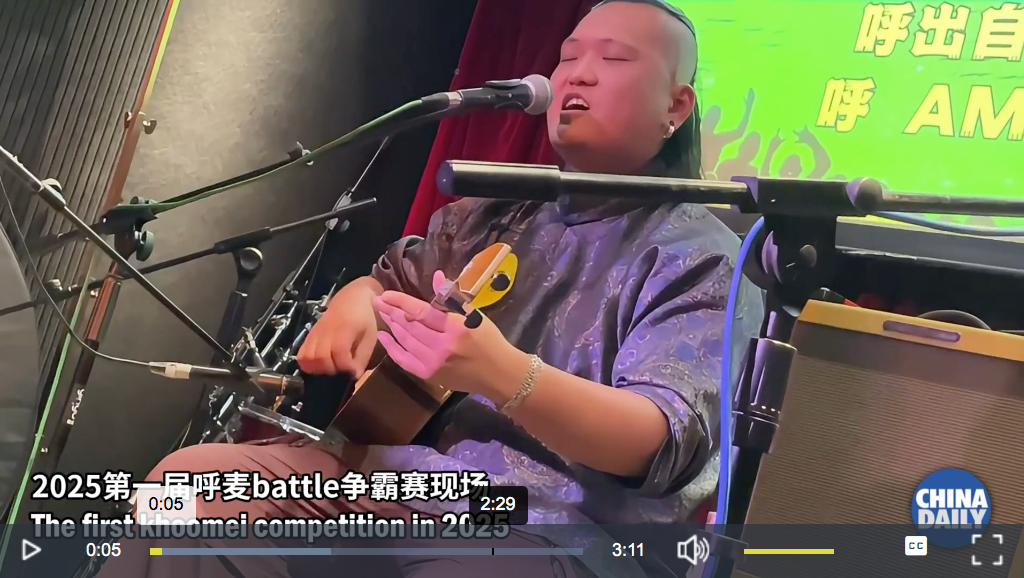The bubbling sound of the low tone in khoomei is produced in the trachea, using the vocal cords vibrating as the base sound.
The origin of the strength of singing
By pressing the abdominal area, known as Dan Tian, the air is expelled from the lungs outward and our mouth modulates the sound after passing through the trachea.
The power of singing comes from the Dan Tian, the reserve of Qi.
LONG SONG
Inner Mongolia long song is a significant form of traditional music among the Mongolian ethnic group, renowned for its melodious, expansive, and broad melodies, along with its unique singing style. Its rhythm is free, the vocal range is wide, and the melodies exhibit significant fluctuations, often utilising a wealth of ornamental notes and glissandos, explains Professor Lantensod, Director of the Long Song Department at the Intangible Cultural Heritage College, Inner Mongolia Arts University.
At Inner Mongolia Arts University, a student plays a long song in a short performance. It is possible to hear how strong the voice is and the long tune thanks to the lungs' capacity.
The singers need to learn how to deeply fill the lungs, thus achieving more lasting and stable vocal support. Professor Lantensod guides a student in singing.
HORSE-HEAD FIDDLE
The horse-head fiddle (aka matouqin) is a Mongolian instrument with the top of the pole carved into the shape of a horse head. The instrument has a long history and was quite popular with the Mongolian people during the early period of the 13th century.
The horse-head fiddle often accompanies khoomei, creating a haunting, resonant soundscape that mimics the vast steppes, wind and galloping horses.
The instrument's melodic and rhythmic patterns complement the harmonic drones of throat singing, enhancing its spiritual and meditative quality.
KHOOMEI ROCKS
In 2018, Anda Union, Inner Mongolia's most famous band, was featured on the lineup for Roskilde Festival, the largest music festival in Northern Europe. Nars, the band's frontman, emphasized that they were the only Asian band on the lineup that year.
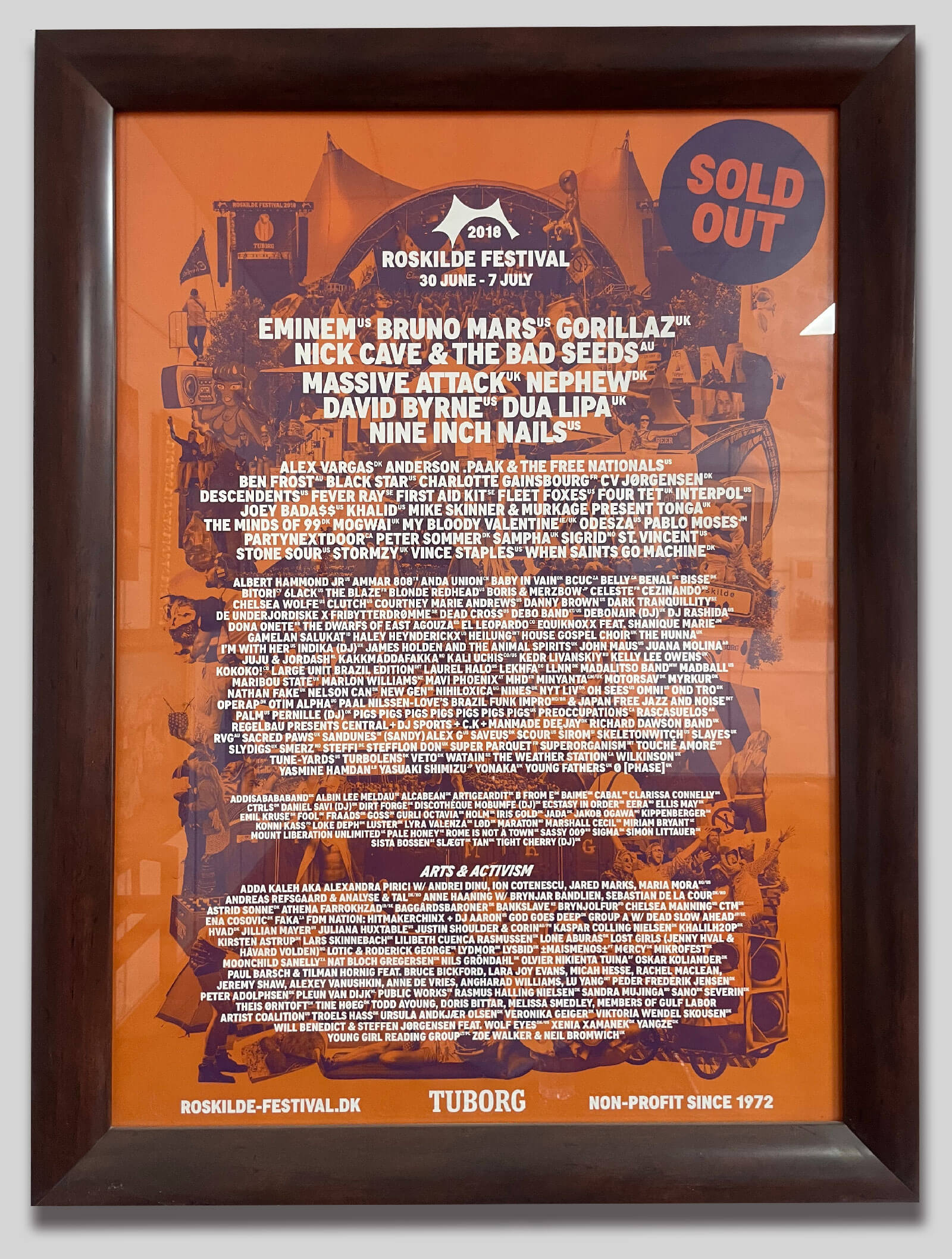
The following video is a compilation of Anda Union performances in various venues.
Provided by Anda Union to China Daily.
Khoomei's competition in Beijing
In April of this year, a rather unusual, colorful and vibrant competition took place in the narrow streets of Beijing's hutongs. Inspired by the battle format popular in modern rap, the organizers attempted to reinvent khoomei in a more youthful and dynamic way. It was an attempt to merge tradition with modern trends.

